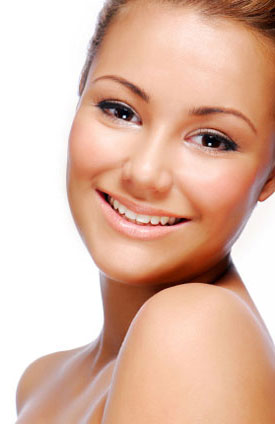Newly acquired by The Energist Group, The {!Portrait Plasma Skin Regeneration (PSR) | Portrait Plasma PSR} is unique in the field of skin rejuvenation in that it uses plasma energy to stimulate new collagen growth. FDA approved for acne scar remission and wrinkle reduction around the mouth and eyes, the Portrait PSR device delivers long lasting results without repeat treatments.

Model Photo
Portland Portrait PSR provider Dr. Elizabeth VanderVeer says, "Portrait Plasma Skin Regeneration is a novel technology which is a one of its kind in the industry. This industry has been looking for the right device that can safely and effectively rejuvenate the skin and the Portrait PSR does that. It's my favorite technology for resurfacing the skin."
While Dr. VanderVeer has several skin rejuvenation devices in her practice, including fractional resurfacing lasers, Dr. VanderVeer points out that the Portrait PSR is unique in many ways. "Plasma energy differs from any other technology in the market. First of all, if you think about the sources of matter, there is solid, liquid, gas and now plasma," describes Dr. VanderVeer, "Plasma is a fourth state of matter and the way that it works on skin rejuvenation is completely unique and absolutely incredible."
During skin rejuvenation, including CO2 lasers and fractionated lasers, treatment includes controlled wounding of the skin - which is why downtime is approximately 7-10 days to allow the redness to abate and the skin to heal. The difference with the Portrait Plasma Skin Regeneration procedure is how the energy is delivered and how the skin heals itself post-procedure.
Dr. VanderVeer explains, "During the Portrait procedure, you work on clearing the epidermis and heating the dermis, which is the deep structure of the skin, while keeping the epidermis intact - so you don't have any bleeding, no oozing, and your risk of infection goes down." By keeping the epidermis intact, it serves as a natural wound dressing that allows the skin below to heal. Due to this distinct healing capability, Dr. VanderVeer says, "In over 6 years of clinical use, there's not been any cases reported of hypo pigmentation."
The plasma energy that is used to rejuvenate the skin can be adjusted to the level of rejuvenation the patient is seeking. A very light "lunchtime-type" treatment is available. Another light treatment may require one day of downtime but a more aggressive treatment will deliver more dramatic results, but will require the more traditional downtime of 7 days. The Portrait PSR works best on patients with Fitzpatrick skin types 1-4 and the spectrum of ages of patients that Dr. VanderVeer has treated range from 16 year old with acne scaring to an 82 year old patient.
For an aggressive Portrait PSR treatment, the procedure takes approximately 1 to 1.5 hours. The procedure is performed under topical numbing cream and sometimes numbing injections. "The clinical results are visible at about 1 month but results continue to improve over a course of 6 months, which is how long it takes for the body's collage to truly remodel," states Dr. VanderVeer, "The best part about this laser though is that with just one aggressive treatment, patients don't need to return year after year. I've had patients still see results at 3 years out now."
Off face, on the body, that Dr. VanderVeer has treated with the Portrait PSR has also yielded good results. "You can use it anywhere on the body and really anywhere that you have skin that you want to tighten," says Dr. VanderVeer, "I've treated ladies after they've had babies and they have lots of lose skin, cellulite and stretch marks. Plasma addresses all of that because it bolsters the skin from the inside out and the wound healing is absolutely fantastic."